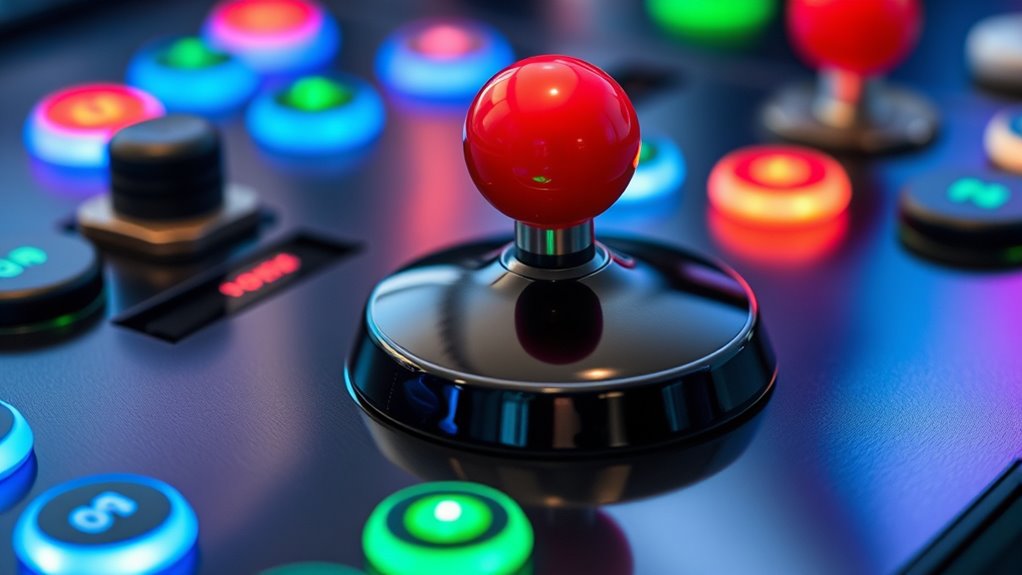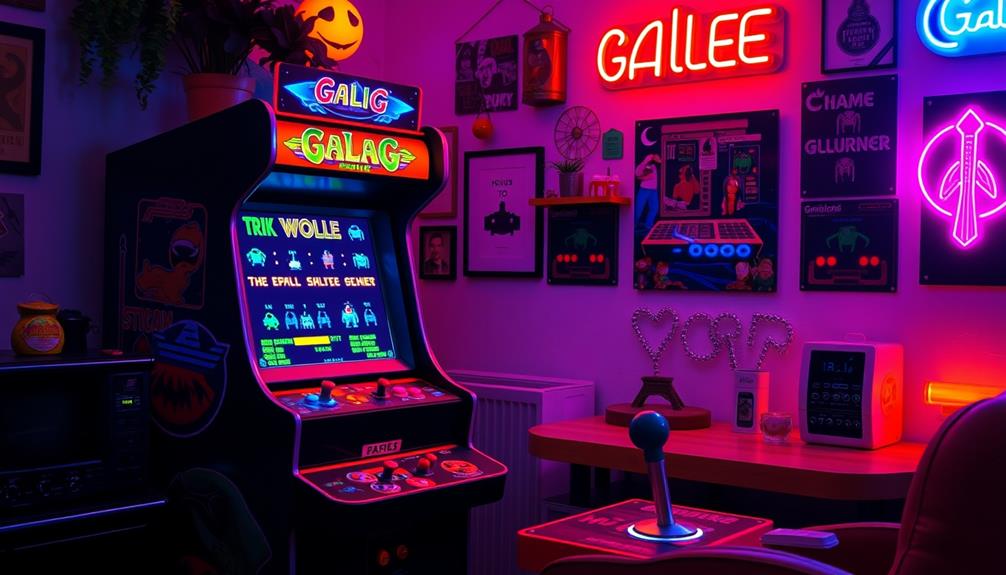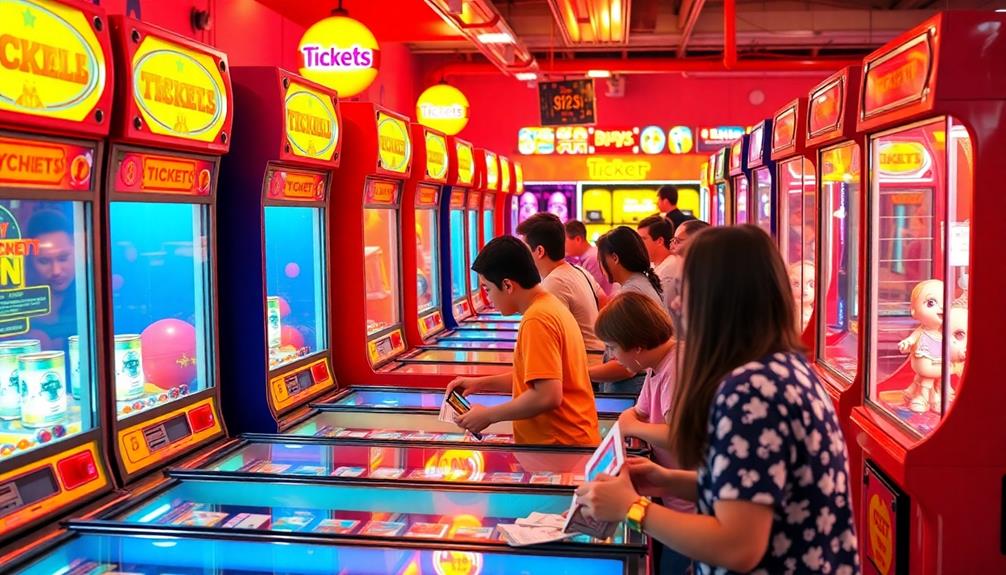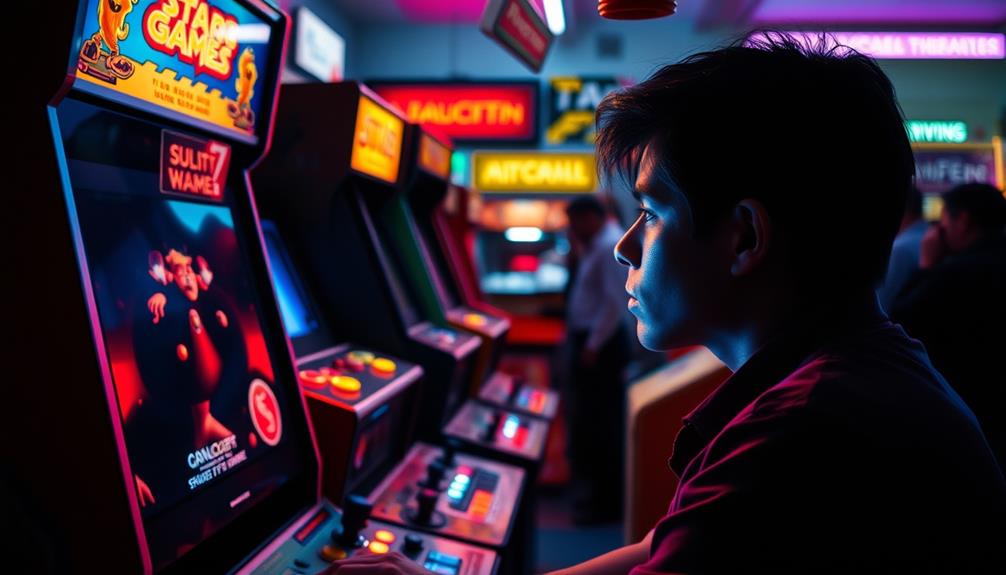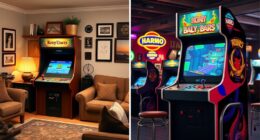Adding force feedback and haptics to arcade controls boosts immersion by providing tactile sensations for actions like hits, crashes, or recoil. You’ll want to carefully place vibration motors for maximum effect, ensuring they sync with in-game events. Proper calibration is key to avoiding discomfort or weak responses. When set up correctly, these features improve control, reaction time, and overall gaming satisfaction. To learn how to optimize your setup, keep exploring these techniques further.
Key Takeaways
- Select appropriate vibration motors and strategically place them within arcade controls to maximize tactile impact.
- Integrate sensors and controllers capable of delivering precise force feedback signals during gameplay.
- Calibrate feedback settings—intensity, duration, and frequency—for realistic and comfortable sensations.
- Test and fine-tune haptic responses to align with game events, enhancing immersion without causing discomfort.
- Incorporate scientific research and best practices to optimize feedback for improved control and player experience.
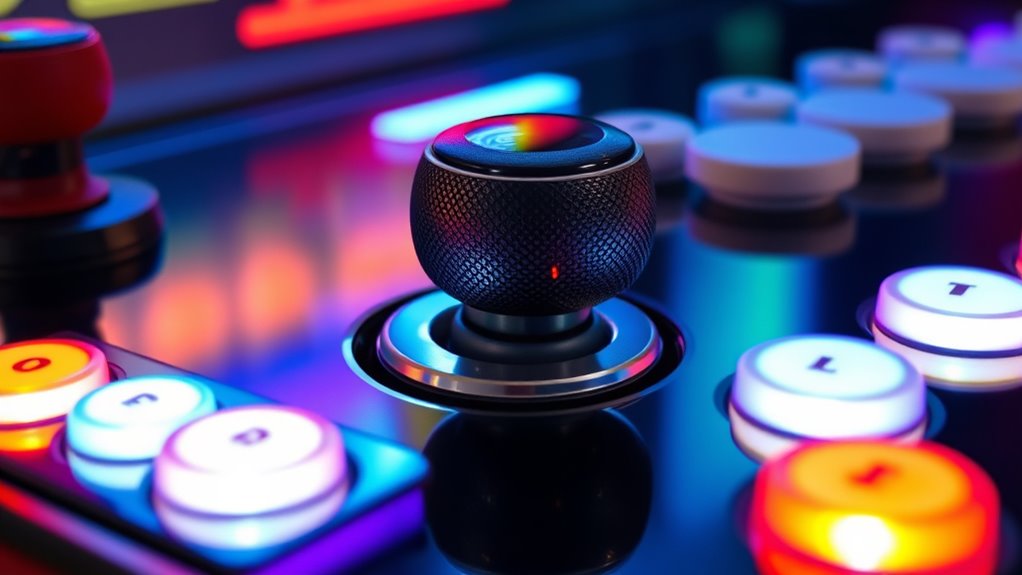
Enhancing arcade controls with force feedback and haptics can significantly improve your gaming experience by making interactions feel more realistic and immersive. When you add vibration motor integration to your arcade setup, you bring tactile sensations directly into your gameplay. Instead of just seeing the action unfold on screen, you feel every punch, crash, or recoil through your controls. This sensory input heightens your engagement and makes the gaming experience more visceral. To achieve this, you’ll need to carefully implement vibration motors into your arcade controls, making certain they’re positioned in key areas to maximize the tactile effect. Proper integration is essential because poorly placed or weak motors can diminish the realism you’re aiming for.
Once you’ve installed the vibration motors, feedback calibration becomes your next focus. Feedback calibration involves fine-tuning the intensity, duration, and frequency of the vibrations to match different in-game events. For example, a light tap should generate a gentle buzz, while a heavy collision demands a more forceful response. Calibration ensures that the feedback aligns with what you see on screen, avoiding mismatched sensations that could break immersion or cause discomfort. Many arcade control systems allow you to adjust these parameters easily through software, giving you control over how sensitive or intense the haptic responses are. Take the time to test various settings and find the balance that feels most natural and satisfying for your gaming style. Additionally, incorporating scientifically-backed psychological research into your calibration process can improve the overall realism and effectiveness of the tactile feedback.
Proper vibration motor integration and feedback calibration do more than just add realism; they also enhance your overall control. When you can feel the impact of your actions, you develop a better sense of control and timing. In fighting games, for example, a well-calibrated haptic response can alert you to successful hits or blocks without needing to constantly look at the screen. This real-time tactile feedback helps you react more quickly and accurately, giving you a competitive edge. Furthermore, a thoughtfully calibrated system prevents feedback from becoming overwhelming or distracting. It’s about striking a balance—enough to feel the thrill but not so much that it becomes uncomfortable or causes fatigue.
Frequently Asked Questions
What Are the Best Force Feedback Motors for Arcade Controls?
You should consider high-quality force feedback motors like the Denso or Pololu 25D or 37D models. These motors excel in force feedback technology, providing strong, precise haptic feedback for arcade controls. They’re reliable and compatible with most haptic feedback systems, giving you a more immersive gaming experience. Make sure to choose a motor with the right torque and size to fit your setup, ensuring smooth and responsive performance.
How Do I Calibrate Haptic Feedback for Different Games?
To calibrate haptic feedback for different games, start with haptic calibration by adjusting the intensity and response settings to your preference. Then, explore game-specific adjustments within each game’s options menu, fine-tuning the feedback to match the gameplay. Test various scenarios to guarantee the haptic response feels natural and enhances your experience. Regularly revisit and tweak these settings for peak performance across different titles.
Can I Retrofit Existing Arcade Machines With Force Feedback?
Yes, you can retrofit existing arcade machines with force feedback, but you’ll face retrofit challenges like fitting new hardware into limited space and guaranteeing compatibility considerations with your original controls. You need to carefully select force feedback kits that match your machine’s specifications and wiring. Be prepared for some custom wiring and possibly modifying enclosure parts to ensure everything fits and functions smoothly, enhancing your arcade experience.
What Safety Precautions Are Necessary When Installing Force Feedback Devices?
Take time to prioritize safety when installing force feedback devices. You should thoroughly check for electric shock hazards by grounding all components properly and avoiding exposed wiring. Guarantee mounting stability by securely fastening devices to prevent vibrations or dislodging during use. Protect yourself with gloves and tools, and double-check connections regularly. By practicing proper precautions, you’ll prevent injuries and ensure a safe, sensational experience for players.
How Does Force Feedback Impact Gameplay Experience?
Force feedback considerably enhances your gameplay experience by boosting player immersion and controller realism. When you feel vibrations and resistance, it makes actions more tangible, helping you connect better with the game environment. This tactile feedback adds depth, making races, fights, or simulations more engaging. As a result, you’ll find yourself more involved and responsive, creating a more authentic and exciting gaming experience that keeps you coming back for more.
Conclusion
Imagine stepping up to an arcade machine and feeling the rumble of a turbo boost or the recoil of a powerful shot—it’s like the game’s energy pulses through your hands. Adding force feedback and haptics transforms your control from simple buttons to a living extension of the game. Just as a guitar’s strings respond to your touch, these technologies deepen immersion, making every move feel real. It’s your doorway to an arcade experience that hits all the right notes.
